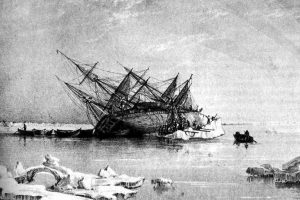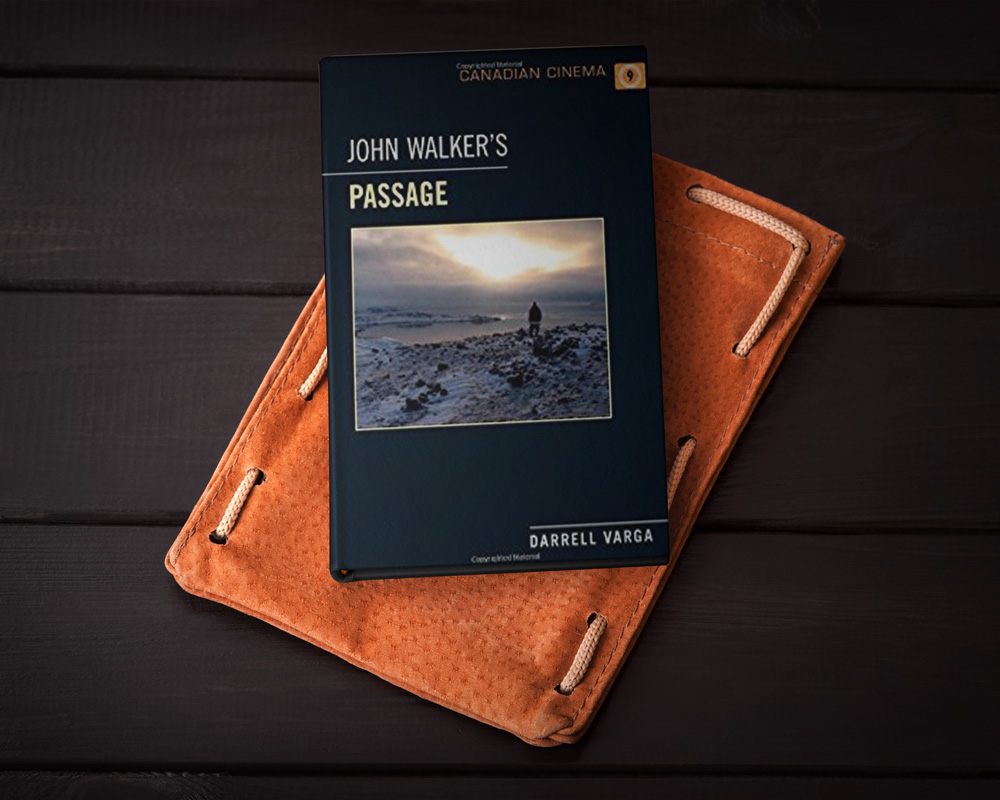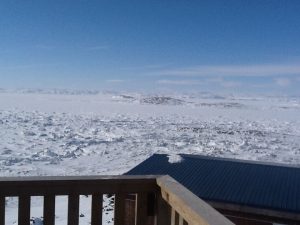A Canadian Geographer’s Notes from Nunavut

Arctic Ventures, Iqaluit
For the last five years, I have annually had the opportunity to spend time in Iqaluit, Canada’s fastest growing community in Canada’s fastest growing territory or province. On arrival, I check out the selection of new books at Arctic Ventures and the screening of new movies about the North. This year, there was the chance to see John Walker’s Passage and to buy a copy of Darrell Varga’s book of the same name in the Canadian Cinema series.

HMS Terror (Image: Wikimedia Commons)
This hybrid film (fictional non-fiction) describes the search for the Franklin expedition, the role of John Rae and in particular, the Inuit perspective. Unravelling the Franklin Mystery’s doomed 1845 quest to find the Northwest Passage is a compelling and impressive inquiry into a part of Canadian history, and given the recent discovery of the Erebus and Terror that would not have been possible without Inuit knowledge. Therefore I highly recommend that you also check out David Woodman’s, Second Edition ‘Unraveling the Franklin Mystery. Inuit Testimony‘ or go online, for an update from Parks Canada, or Canadian Geographic magazine. Parks Canada has announced it will work together with the Inuit of the Kitikmeot region to develop a National Historic Site in Nunavut dedicated to Sir John Franklin’s ill-fated expedition.
In Darrell Varga’s book, he places the cinematography of John Walker into the larger context of NFB documentaries, as well as the intellectual influence of Harold Innis.
‘The question of space and time informs our relationship to place and community as is the dominant force structuring communication, and it can also be understood as a key framework for understanding Passage’. p.103.
Innis was Professor, Poltical Economy at the University of Toronto, some of his books include ‘The Fur Trade in Canada‘. and ‘The Cod Fisheries: the History of an International Economy‘. He established what is known as the staples thesis of economic history, whereby the development of a nation state is understood as an outcome of formative resource-based economic activity.
‘Innis’s method of study included what he called ‘dirt research’ which involves extended visits into the far-flung territories of the country, from the north to the maritime outports, and even included long canoe trips down fur-trade routes such as the Churchill River. At the time, no other scholar took this kind of hands-on interest in the ‘regions’ of Canada.’ p. 104
This is very similar to the process of a documentary film making. ‘Passage does this through poetic representation of the North, while also reminding us that a sense of place is mediated by the writing of history, by perspective, and especially by the camera itself. p.105
‘For Innis, a key contribution of Canadian intellectual discourse is the perspective on power formulated at a remove from the centre. Passage takes as its foundation the resistance to empire from the margins.’ p. 110.

Darrel Varga – John Walker’s Passage
Varga states: ‘ it is my contention that documentary film, at least in the hands of a reflective artist like John Walker, has potential to provide what Innis wanted : that is, a space for free thinking not under the rigid spell of technology, power and administered society. In this way, it is a return to oral culture … It is a space of dialogue that may take a variety of forms, including writing, but what is important is the concept of dialogue as a means of transforming the monopoly of power attendant to mass media and in the structure of contemporary society’. p.116.
‘What Innis advocated was a society that fostered a balance between spoken and written texts and thus allowed a balance between the oral and spatial bias of communication … The spatial bias is offset by specific practices exemplified in Passage. Of particular note is a research methodology that included dialogue with many Inuit elders, who provided an oral history that has a direct line with the time and space of Franklin’s expedition’. p. 117
‘While the oral tradition functions to maintain the coherence of small and closed communities, it also requires mobility – the student has to seek out the elder or the scholar because knowledge is not readily available in portable form, in the written word … In the case of nomadic Inuit, mobility is closely integrated with an understanding of space.’ p. 118
The film treats space as vast and sublime terrain, but also as geography formed out of a dialectic of power stretching from empire to margin.’ p. 118.
‘The filmmaker’s tactics come into play in the trenches of policy formation, but also in struggles with the ruins of history and the challenges of representation. Passage demonstrates how vital and engaging are these struggles. From Innis we can learn to connect these issues with the history of language and power, space and time., p.122.
In conclusion, we need to get back to more hands on ‘dirt research’. Meanwhile, I highly recommend that you watch John Walker’s Passage; read Varga’s book; so that you yourself can reflect on the writings of Harold Innis and its relevance to the present state of Canada as a nation.
References:
Darrell Varga. 2012. John Walker’s Passage. Canadian Cinema 9. University of Toronto Press.
David C. Woodman. 2015. Unraveling the Franklin Mystery. Inuit Testimony. Second Edition. McGill Queens University Press.
John Walker. 2008. Passage. Co-production with NFB.










I received email from Ken Beardsall, Curriculum Consultant. He mentioned a link to the Grade 8 Social Studies Unit in Nunavut. Umiaqtalik: Inuit Knowledge and the Franklin Expedition.
http://www.canadianmysteries.ca/sites/franklin/home/homeintro_en.htm
Bob
Thanks Bob,
Good article, close to my heart. I’m not sure I like Innis’ term “Dirt Research” since it makes it seem dirty or less beautiful than text based research, but I suppose he was using the term as a bit of a poke at his fellow scholars who didn’t like to get out of their offices and libraries.
We worked with Louie Kamookak on a grade 8 Social Studies Unit called, “Umiaqtalik: Inuit Knowledge and the Franklin Expedition”. It was amazing to hear him pass on the stories he learned as a boy from his Great Grandmother about the strangers that visited their lands back in the 1840’s. The Unit is connected with this web site http://www.canadianmysteries.ca/sites/franklin/home/homeIntro_en.htm which you may find interesting. A group from U Vic has been developing “Great Unsolved Mysteries in Canadian History” for students. We joined in on this one since it was about Nunavut.
I will try to get a copy of Varga’s book and also see the film!
Thanks again for sharing and enjoy the rest of the time in Iqaluit. They had a display at the museum about Franklin, I’m not sure if it’s still there but it’s worth checking out if you’re are down in that part of town. Aaron Watson at the Visitor’s Centre is usually showing some great films too (maybe that’s where you saw Passages??)
Have a great day!
Ken
Good essay !